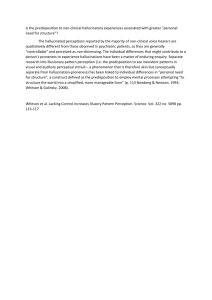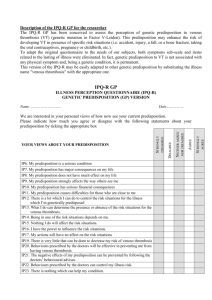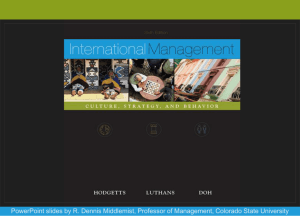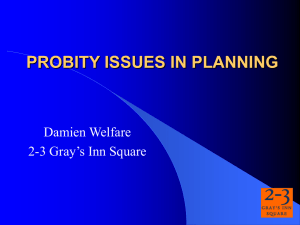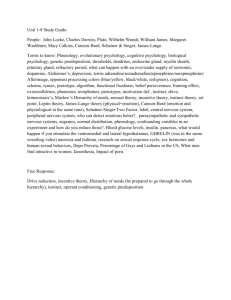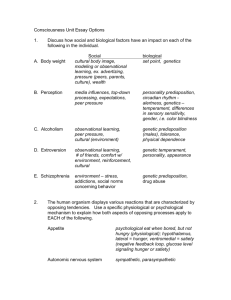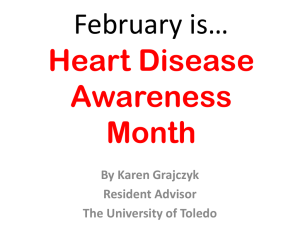2.22 - Open Online Courses
advertisement
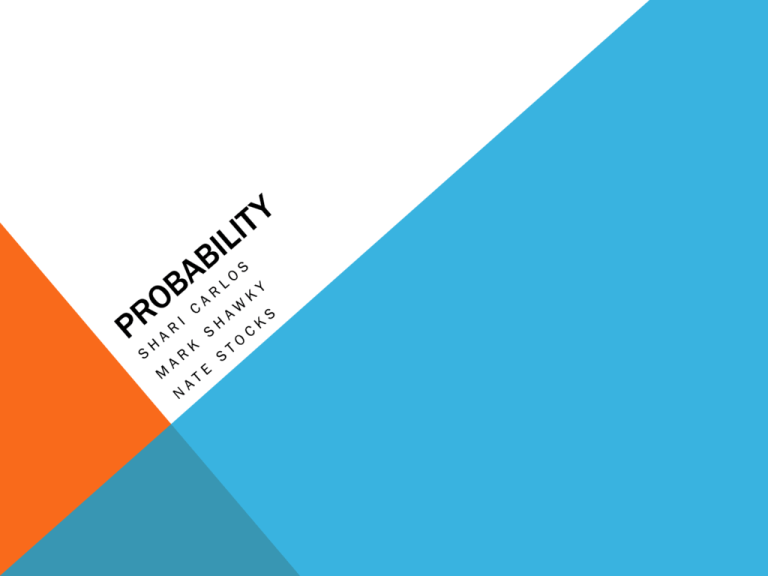
PROBLEM 2.22 The best way to start this problem is to write out and draw what you’re given. After reading the question once, we know the following information: 3% predisposed 99% test (+) ? 98% test (-) PROBLEM 2.22 (CONT.) With the information we’re given, we are able to calculate the rest of the information we are not given. A. 1 - .03 = .97 B. 1 - .99 = .01 C. 1 - .98 = .02 99% test (+) 3% predisposed B. C. A. 1% test (-) 2% test (+) 97% not predisposed 98% test (-) PROBLEM 2.22 (CONT) Next, we find the product of each possibility by multiplying through each branch. A. .03 x .99 = .03 B. .03 x .01 – 0.00 C. .97 x .02 – 0.02 D. .97 x .98 = 0.95 99% test (+) A. 0.03 1% test (-) B. 0.00 2% test (+) C. 0.02 98% test (-) D. 0.95 3% predisposed 97% not predisposed PROBLEM 2.22 Question: What is the probability that a randomly selected person who tests positive for the predisposition actually has the predisposition? Here we want to look at 2 different values. We know that 0.03 people test positive for the predisposition, and that (0.03 + 0.02 = 0.05) actually have the predisposition. Therefore: 0.03 / 0.05 = 60% Actually have the predisposition
